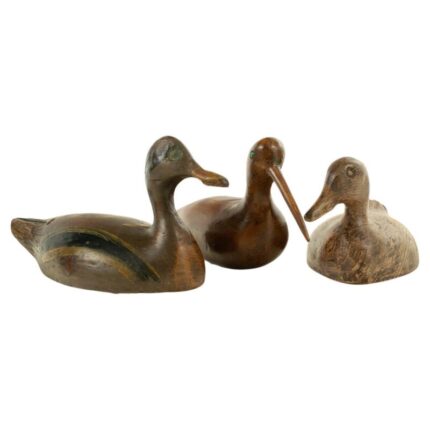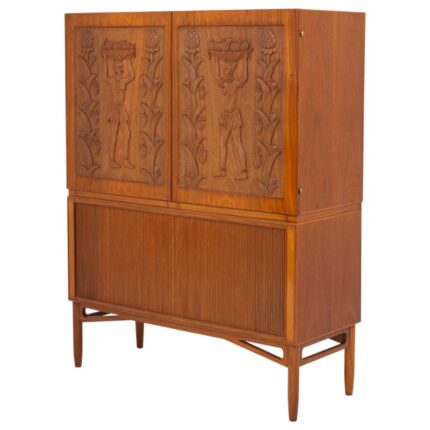The written text on the poster is in Ukrainian and says: Lenin 1941-1945.
“Glory to the Komsomol!”
The artist’s name, Timofey Anatolevich Lyaschuk, is printed on the poster.
Published by the “Agitplakat” Union of Artists of the Ukrainian SSR.
This artwork is the creation of Timofey Anatolevich Lyaschuk (1930-2015), a renowned Ukrainian artist. Lyaschuk was a painter, graphic artist, poster artist and a member of the Union of Artists of the Ukrainian SSR. In 1967, he was awarded the Diploma of the Presidium of the Supreme Soviet of the USSR, and in 1969, he was recognized as an Honored Artist of Ukraine. In 2000, he received the Commendation of the President of Ukraine for his contributions to the arts.
This Soviet poster prominently celebrates the All-Union Leninist Young Communist League (Komsomol), known as VLKSM (Всесоюзный Ленинский Коммунистический Союз Молодёжи).
Central Figures:
The poster depicts a group of young women marching forward with flags. Their angular, stylized figures suggest energy, strength, and determination, symbolizing the youthful vigour of Komsomol members.
The largest figure at the front leads the way, holding a red flag, a powerful symbol of the communist movement and the ideals of socialism. The red colour symbolizes the blood shed by workers in the struggle for communism, while the flag represents the working class’s unity and determination. Her posture and determined expression convey a sense of leadership, heroism, and the future-oriented optimism of Soviet youth.
Although smaller, the figures behind her are similarly marching in unison, representing the collective strength and solidarity of the Soviet youth in their mission to support and build socialism.
Lenin Iconography:
Above the figures is a large medallion featuring Vladimir Lenin’s portrait, framed by laurel wreaths and a red ribbon. This is the emblem of VLKSM, linking the youth movement directly to Lenin, the founder of the Soviet state. The symbol suggests that Komsomol members are carrying forward Lenin’s revolutionary ideals.
The ribbon’s date, “1954–1956,” marks a specific period of the VLKSM’s history, likely referring to a notable congress or anniversary. This is a common motif in Soviet propaganda posters, where specific dates are highlighted to celebrate the Communist Party’s or related organizations’ historical achievements.
Background and Wheat Symbolism:
The background features a stylized pattern of yellow wheat sheaves. Wheat, a symbol of agriculture, fertility, and prosperity, represents the Soviet Union’s emphasis on collective farming and the role of young people in ensuring agricultural productivity. The use of wheat also suggests the importance of labour in industry and agriculture in building socialism.
The presence of industrial imagery at the bottom right, with factory chimneys in silhouette, emphasizes the role of the youth in supporting the Soviet industrial economy. The juxtaposition of wheat and factories underlines the unity of agriculture and industry—crucial to the Soviet economy.
Bold Colors:
The red and yellow colour scheme is typical of Soviet posters, with red symbolizing the revolution, socialism, and the blood shed by workers in the struggle for communism, while yellow often represents prosperity and the bright future promised under socialism.
The contrast between red and yellow ensures that the imagery and text stand out, creating a sense of urgency and importance.
Text:
The bold yellow text at the bottom of the poster reads “СЛАВА ВЛКСМ!” (“Glory to VLKSM!”), a rallying call to honour Komsomol’s achievements and inspire pride among its members. This slogan reinforces the message of youthful energy and dedication to the Communist cause.
The fonts are sharp, angular, and forceful, adding to the sense of dynamism and strength.
This poster reflects key themes in Soviet propaganda aimed at the youth:
Collective strength: The multiple figures marching in unison symbolize the unity and solidarity of Soviet youth, working together towards a common goal.
Leadership and progress: The leading figure embodies the leadership qualities expected of Komsomol members, while the forward motion symbolizes progress toward the bright future of communism. This depiction of leadership is not only inspiring but also serves as a call to action for the youth to step up and lead the way towards a better future.
Lenin’s influence: The prominent placement of Lenin’s portrait emphasizes that the youth movement is inseparably linked to Lenin’s vision and the ideals of the October Revolution. This connection to Lenin’s vision is a powerful reminder of the historical roots of the Soviet youth movement, instilling a sense of continuity and purpose in its members.
Agricultural and industrial unity: The presence of wheat and factories in the background underscores the balance of rural and urban labour in the Soviet economy, a key aspect of Soviet ideology.
Overall, the poster glorifies the role of the youth, particularly Komsomol members, in building the future socialist society, presenting them as the dynamic and optimistic vanguard of Soviet progress. The design’s **bold colours**, **heroic figures**, and **clear iconography** work together to create a compelling and inspirational image.
Komsomol
The All-Union Leninist Young Communist League (Russian: Всесою́зный ле́нинский коммунисти́ческий сою́з молодёжи (ВЛКСМ)), usually known as Komsomol (Russian: Комсомо́л, a syllabic abbreviation of the Russian kommunisticheskiy soyuz molodyozhi), was a political youth organization in the Soviet Union. It is sometimes described as the youth division of the Communist Party of the Soviet Union (CPSU). However, it was officially independent and referred to as “the helper and the reserve of the CPSU.”
In its earliest form, the Komsomol was established in urban centers in 1918. During its early years, it was a Russian organization known as the Russian Young Communist League or RKSM. In 1922, with the unification of the USSR, it was reformed into an all-union agency, the youth division of the All-Union Communist Party.
The Komsomol of Ukraine—an integral part of the All-Union Lenin Youth Union—celebrates its glorious tenth anniversary. Its heroic path is inextricably linked with the struggle of the Soviet people under the leadership of the Communist Party for the victory of socialism and communism. Those who marched in the ranks of the Komsomol on the fronts of the Civil Front and during the years of the Five-Year Plans, who forged victory over fascism at the front and in the rear, who rebuilt the national economy after the Great Patriotic War, covered themselves with immortality, mastered virgin land, and built new mines, factories, and power plants. On the half-century anniversary, the glorious brainchild of the native Leninist party, the Komsomol of Ukraine, meets the leaders of communism in the first ranks. Together with everyone in the family, it is preparing to meet the 100th anniversary of the birth of V.I. Lenin with dignity. Young men and women who proudly wear Komsomol tickets dedicate their paintings and sculptures to the artists of Ukraine. Their works vividly embody the images of those devoted to communism, who, with their initiative and inexhaustible energy, earned the utmost respect for the Soviet family.
-
Dimensions:Height: 43.31 in (110 cm)Width: 28.75 in (73 cm)Depth: 0.4 in (1 cm)
-
Materials and Techniques:PaperSilk
-
Place of Origin:Russia
-
Period:20th Century
-
Date of Manufacture:1967
-
Condition:Good
-
Seller Location:Barueri, SP, BR
-
Reference Number:Seller: LU9788241366692





























Reviews
There are no reviews yet.